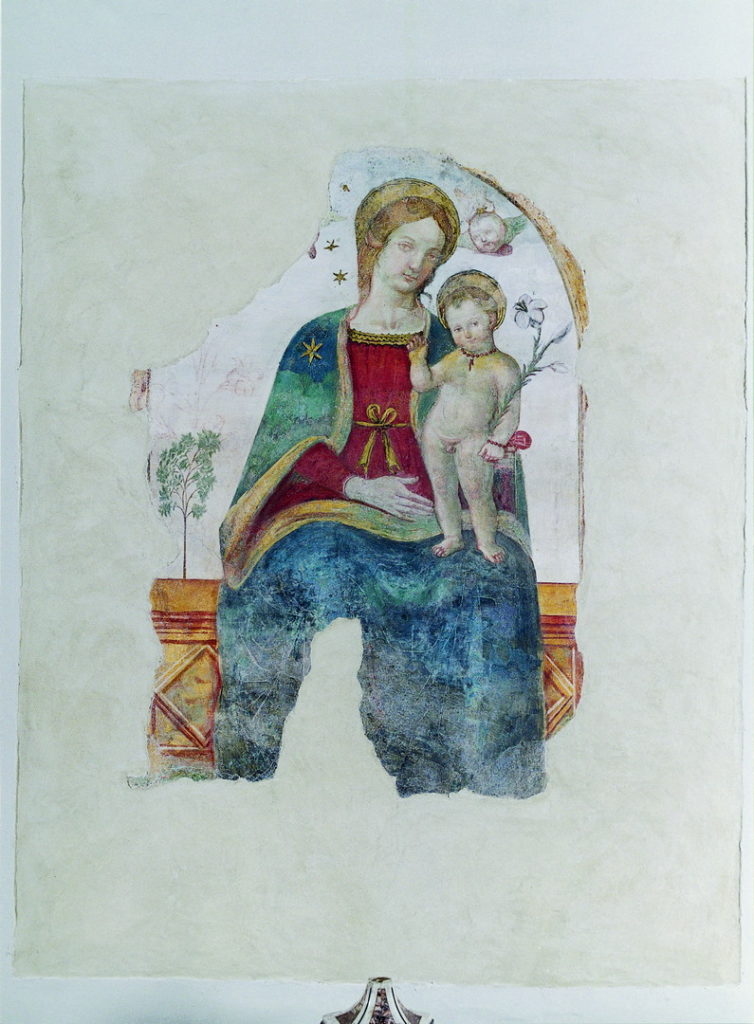Tu sei qui
THE MADONNA OF THE LILY
The frescoed image of the Madonna of the Lily was to be found in a roadside chapel in the area of Valiano, near the monastery, and was the object of great devotion because of its role in a miraculous event. So much so, in fact, that Pope Urban VIII, between 1642 and 1643, decided to have it moved to the Basilica of San Pietro in Perugia, in a chapel built expressly for that purpose. The work can be attributed to Giovanni di Pietro called lo Spagna, a painter from Spain who was strongly influenced by Perugino. He was very productive in Spoleto and southern Umbria; particularly skilled at frescoes, he executed many important altarpieces, such as that of the convent of Montesanto in Todi. This work shows the Crowning of the Blessed Virgin. The fresco, now in the City Gallery of Todi, is evidence that he was familiar, as was Raphael, by whom he was greatly influenced, with the famous prototype painted by Domenico Ghirlandaio in 1486 for the Friars Minor of the Church of San Girolamo in Narni. The Madonna of the Lily elicited such devotion that various copies were made, not only in Perugia. The most important of these is that commissioned by Abbot Leone Pavoni, painted by Sassoferrato in about 1636, before the detached fresco was moved. There are copies in Reggio Emilia (San Prospero) and Modena (San Pietro).


